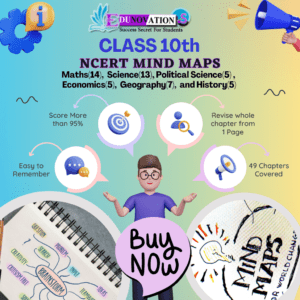Kerala Class IV history textbook cartographic errors Assam Jharkhand missing states spark outrage. Experts question SCERT accuracy in school education.
A New Controversy in Kerala’s School Education
Kerala has once again found itself at the center of an academic debate, this time over the Kerala Class IV history textbook cartographic errors Assam Jharkhand missing from maps. The issue has gained traction after parents, teachers, and historians noticed glaring inaccuracies in the Social Studies textbook for Class IV students.
What was intended to be an introductory resource for young learners has turned into a talking point for the entire education sector. The mistakes go beyond minor typographical slips and touch upon sensitive historical and geographical representations.
The controversy began when teachers reported that in the printed Class IV Social Studies textbook, entire states like Assam and Jharkhand were missing from the Indian map. Similarly, notable historical leaders such as Annie Besant and Subhash Chandra Bose were misrepresented, raising questions about the quality control process in educational publishing.
How the Textbook Errors Came to Light
Teachers from various districts flagged the mistakes soon after the textbooks were distributed at the start of the academic session. The SCERT Kerala teacher’s guide errors highlighted not just cartographic inaccuracies but also errors in describing historical figures.
For example:
- The book incorrectly mentioned that Subhash Chandra Bose formed the INA in Singapore in 1943, while historical records show its earlier foundation.
- Another glaring misprint incorrectly described Annie Besant as the first woman president of the Indian National Congress, overlooking Sarojini Naidu who rightfully holds that recognition.
- The Kerala school textbook map error missing Assam and Jharkhand students spot immediately went viral on social media platforms, leading to criticism from academics and public figures.
Toppers Use Mind Maps to score more than 95%
NCERT Class 11th Commerce Mind Maps
Add to cartOriginal price was: ₹999.00.₹199.00Current price is: ₹199.00.NCERT Class 12th Chemistry Mind Maps
Add to cartOriginal price was: ₹199.00.₹75.00Current price is: ₹75.00.NCERT Class 12th Commerce Mind Maps
Add to cartOriginal price was: ₹999.00.₹199.00Current price is: ₹199.00.NCERT Class 12th Science Mind Maps
Add to cartOriginal price was: ₹999.00.₹199.00Current price is: ₹199.00.NCERT Mind Maps For Class 10th
Add to cartOriginal price was: ₹999.00.₹199.00Current price is: ₹199.00.
Purchase Today
Wider Implications of Textbook Errors
Textbooks are more than just study material; they form the foundation of a child’s worldview. When errors such as these go unchecked, it impacts not only factual knowledge but also the credibility of the education system.
Educational experts argue that these inaccuracies can distort historical understanding. For a state like Kerala, which prides itself on a high literacy rate and quality public education, such mistakes undermine decades of progress.
According to education activist Dr. S. Harikumar, “The fact that misprint Kerala fourth grade Social Studies SCERT teacher’s guide errors went unnoticed during proofreading shows systemic weaknesses. Even small inaccuracies in early education create long-lasting misconceptions among students.”
Digital vs. Printed Drafts
Interestingly, reports suggest that the printed textbook vs. digital draft discrepancies are at the core of the issue. Teachers found that while the digital versions were mostly accurate, the printed textbooks circulated in schools carried errors.
This duality has left educators confused, forcing them to rely on their own notes and references. Many schools have now started encouraging teachers to refer to supplementary resources like NCERT Notes and NCERT Courses to ensure accurate teaching material.
Political and Social Reactions
The controversy has drawn political attention as well. Opposition leaders in Kerala have accused the state government of negligence, demanding accountability from the State Council of Educational Research and Training (SCERT).
Cultural historian Dr. Leela Menon criticized the lapse, stating, “Errors such as the Subhash Chandra Bose INA formation error Kerala Class IV textbook are not simple mistakes. They reveal a lack of respect for historical accuracy.”
Social media has amplified these criticisms, with parents sharing photographs of the erroneous maps. Hashtags like #KeralaTextbookError trended, putting pressure on authorities to act quickly.
Steps Taken by SCERT Kerala
In response to the growing outrage, SCERT Kerala has acknowledged the mistakes. Officials have promised that reprints will be issued before the next academic session and that teachers will be given corrected reference material in the meantime.
SCERT Director Jayaprakash R.K. assured the public that the errors will be rectified. He also emphasized that while digital drafts had accurate information, the misprints crept into the printed copies due to “technical oversights.”
Meanwhile, schools have been advised to use teacher’s handbooks and digital versions for classroom instruction until corrected copies are available. Teachers are also encouraged to use supplemental resources like Edunovations Current Affairs and free NCERT PDF downloads to ensure students are not misinformed.
Why Do Such Errors Occur?
Several experts point to overlapping bureaucratic responsibilities, tight publishing deadlines, and lack of subject expert involvement as root causes.
Publishing educational material is a rigorous process that requires collaboration between content writers, subject experts, proofreaders, and printers. However, as seen in the Annie Besant first woman INC president misprint in Kerala textbooks, errors still slip through due to poor cross-checking.
In comparison, organizations like NCERT Mind Maps regularly update their resources to avoid inaccuracies. The SCERT incident highlights the urgent need for Kerala to adopt similar processes.
Broader Impact on Students and Teachers
The misprint Kerala fourth grade Social Studies SCERT teacher’s guide errors have forced teachers to double-check every fact before teaching. Many fear that this erodes the trust between students and official textbooks.
Students preparing for competitive exams may also be adversely affected. Early misconceptions about geography or history could cause confusion later in higher studies. To mitigate this, educators are recommending resources like MCQs and video lessons for better clarity.
Expert Insights: Need for Stronger Review
Professor Anil Joseph, a senior historian, believes that the controversy should be a wake-up call. “If Kerala, which has one of the best literacy models in India, can produce textbooks with such glaring mistakes, what does it say about educational oversight in other states?”
He also stressed that cartographic errors are not just academic lapses. In today’s politically sensitive environment, a Kerala school textbook map error missing Assam and Jharkhand students spot could also be interpreted as a disregard for national unity.
Looking Ahead
The Kerala government has promised transparency and corrective measures, but the damage to credibility is already evident. Parents are more cautious, teachers are skeptical, and education activists are demanding structural reform in textbook publishing.
As the debate continues, one thing is clear: Kerala’s Class IV textbook controversy is not just about missing states or misprints. It is about ensuring that future generations are taught with accuracy and integrity.
For schools and educators seeking reliable digital resources, platforms like Mart India Infotech are also being recommended for quality educational support systems.
Frequently Asked Questions (FAQs)
Q1. What is the Kerala Class IV textbook controversy about?
It revolves around Kerala Class IV history textbook cartographic errors Assam Jharkhand missing from maps, along with misprints about historical leaders like Subhash Chandra Bose and Annie Besant.
Q2. Which states were missing from the Kerala school textbook map?
Teachers and students noticed that Assam and Jharkhand were missing in the printed edition.
Q3. How was Subhash Chandra Bose misrepresented?
The book incorrectly claimed that Subhash Chandra Bose formed the INA in Singapore in 1943, an oversimplification and factual error.
Q4. What error was made about Annie Besant?
The textbook wrongly described Annie Besant as the first woman INC president, instead of Sarojini Naidu.
Q5. Were these errors present in digital editions too?
No, experts say printed textbook vs. digital draft discrepancies caused confusion; digital drafts were more accurate.
Q6. How did SCERT Kerala respond to the issue?
SCERT admitted the errors and promised reprints before the next academic year to correct mistakes.
Q7. Why are such textbook errors significant?
Because they shape children’s understanding of history and geography, and can cause long-term misconceptions.
Q8. What other errors were found?
Apart from cartographic errors, teachers also pointed out issues in maths, shapes, and color descriptions.
Q9. How can teachers handle the situation until corrections are made?
They are advised to use supplementary resources like NCERT Syllabus and NCERT Notes.
Q10. What broader lessons can be learned from this controversy?
That educational publishing must involve rigorous reviews and accountability to avoid controversies like the misprint Kerala fourth grade Social Studies SCERT teacher’s guide errors.














